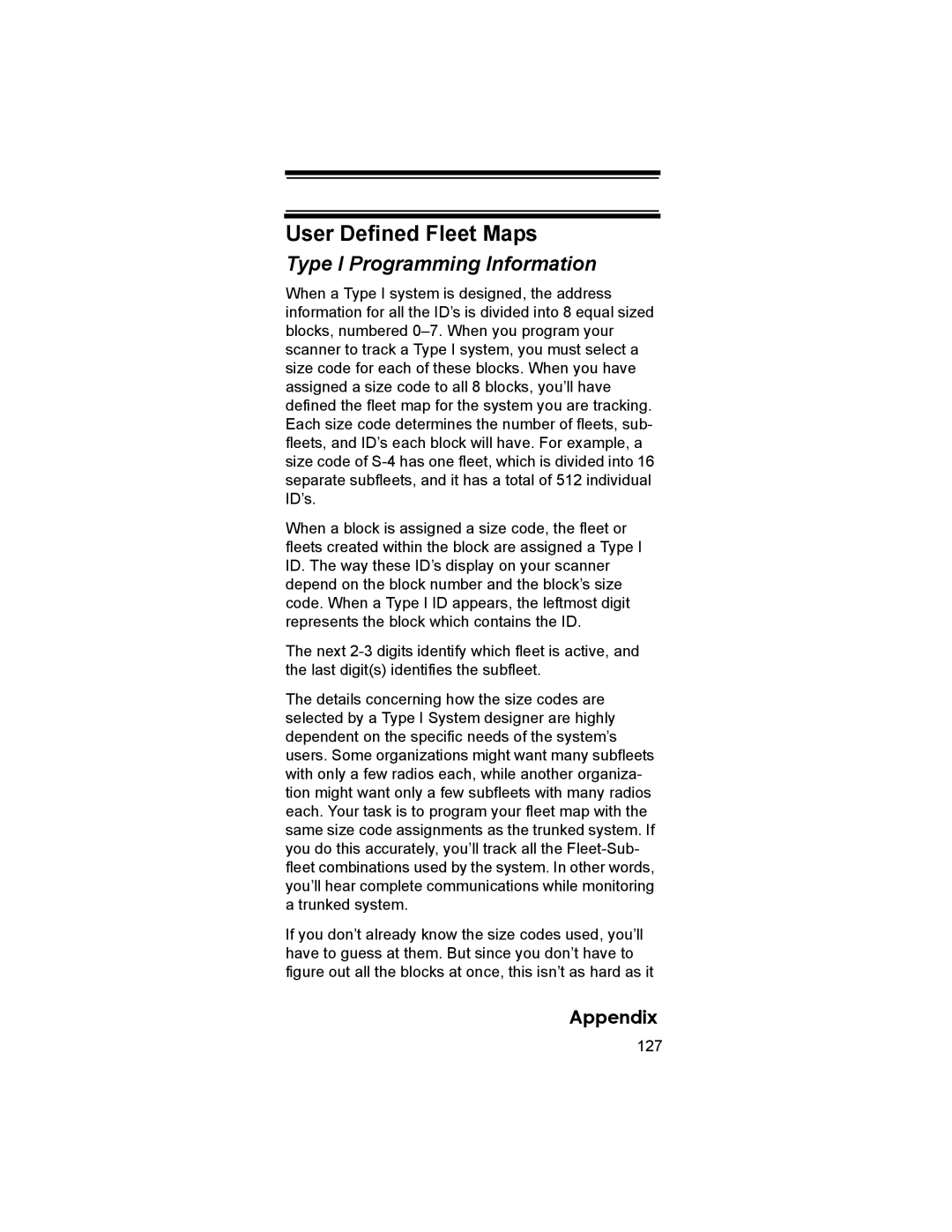User Defined Fleet Maps
Type I Programming Information
When a Type I system is designed, the address information for all the ID’s is divided into 8 equal sized blocks, numbered
When a block is assigned a size code, the fleet or fleets created within the block are assigned a Type I ID. The way these ID’s display on your scanner depend on the block number and the block’s size code. When a Type I ID appears, the leftmost digit represents the block which contains the ID.
The next
The details concerning how the size codes are selected by a Type I System designer are highly dependent on the specific needs of the system’s users. Some organizations might want many subfleets with only a few radios each, while another organiza- tion might want only a few subfleets with many radios each. Your task is to program your fleet map with the same size code assignments as the trunked system. If you do this accurately, you’ll track all the
If you don’t already know the size codes used, you’ll have to guess at them. But since you don’t have to figure out all the blocks at once, this isn’t as hard as it
